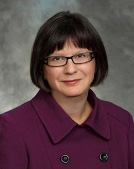 This year LESA’s summer students (Kristine Gu and myself – Allison Boutillier) are interviewing practitioners to gain insight into the broad range of careers that a legal education can lead to. The first interview features Donna Tingley, a board member at the National Resources Conservation Board (NRCB) since 2006.
This year LESA’s summer students (Kristine Gu and myself – Allison Boutillier) are interviewing practitioners to gain insight into the broad range of careers that a legal education can lead to. The first interview features Donna Tingley, a board member at the National Resources Conservation Board (NRCB) since 2006.
At the outset, we asked Donna to tell us about the NRCB and her position as a board member. She explained that the NRCB is an independent government agency responsible for reviewing non-energy natural resource projects, such as water, forestry, mining, and recreation projects. It also regulates confined feeding operations in Alberta. NRCB board members conduct hearings on these matters and participate in the overall management of the organization, including approving the NRCB’s budget and business plan.
As Donna explained, most of the board members are not lawyers. Instead, the majority come from technical backgrounds related to the matters that they hear, which is to say, natural resource projects and confined feeding operations. “One of my colleagues is an engineer, another one is a rancher – which makes sense, given what we regulate – and the chairman comes out of a municipal background. He was the mayor of Sherwood Park. That kind of range is typical.”
When lawyers do sit as board members, they usually come from private practice, often having worked in fields that required them to appear before the boards they eventually sit on. Donna, however, took a more unconventional path to becoming an NRCB board member.
There is no question my legal career has been atypical. My background has never been in private practice. Right off the bat I started articling with – it was called the Attorney General’s Department – now, Alberta Justice. For a little while, I worked for the province in the area of Native Affairs on aboriginal land claims, but then I moved right into the environmental field, which is where I worked until I came here. I worked for 15 years with a non-profit called the Environmental Law Centre, mostly as Executive Director, and another 7 years at another non-profit called the Clean Air Strategic Alliance, where I was Executive Director as well.”
Although atypical, Donna has found that her previous work in the environmental sector has allowed her to bring an important perspective to the NRCB. She worked extensively with public policy questions and now uses this experience to inform decisions about whether natural resource projects are in the public interest.
It was taking my experiences working in environmental law to a decision-making role where I can actually impact the outcome of some of these challenging environmental questions that I have worked on my whole career.”
What’s more, working at the NRCB has allowed Donna to expand her understanding of the technical issues that the NRCB hears. As she puts it, “A lot of my time is spent reviewing material. It is not spent sitting in a court room situation, which is what everyone imagines. It is really studying these environmental assessments and trying to figure them out.”
As difficult as that may sometimes be, Donna explains that the time spent going through lengthy and technical hearing materials is more than worth it.
It is really satisfying at this point to have an opportunity to be involved in decision-making. It is really difficult to think about what is in the public interest, but, at the end of the day, it is very satisfying.”
We appreciated hearing Donna share her experiences, and we hope that you will too. Whether you are a practicing lawyer considering new opportunities or a law student looking at possible career trajectories, stay tuned for more practice profiles coming to the LESA blog.
Allison Boutillier
LESA Summer Student
